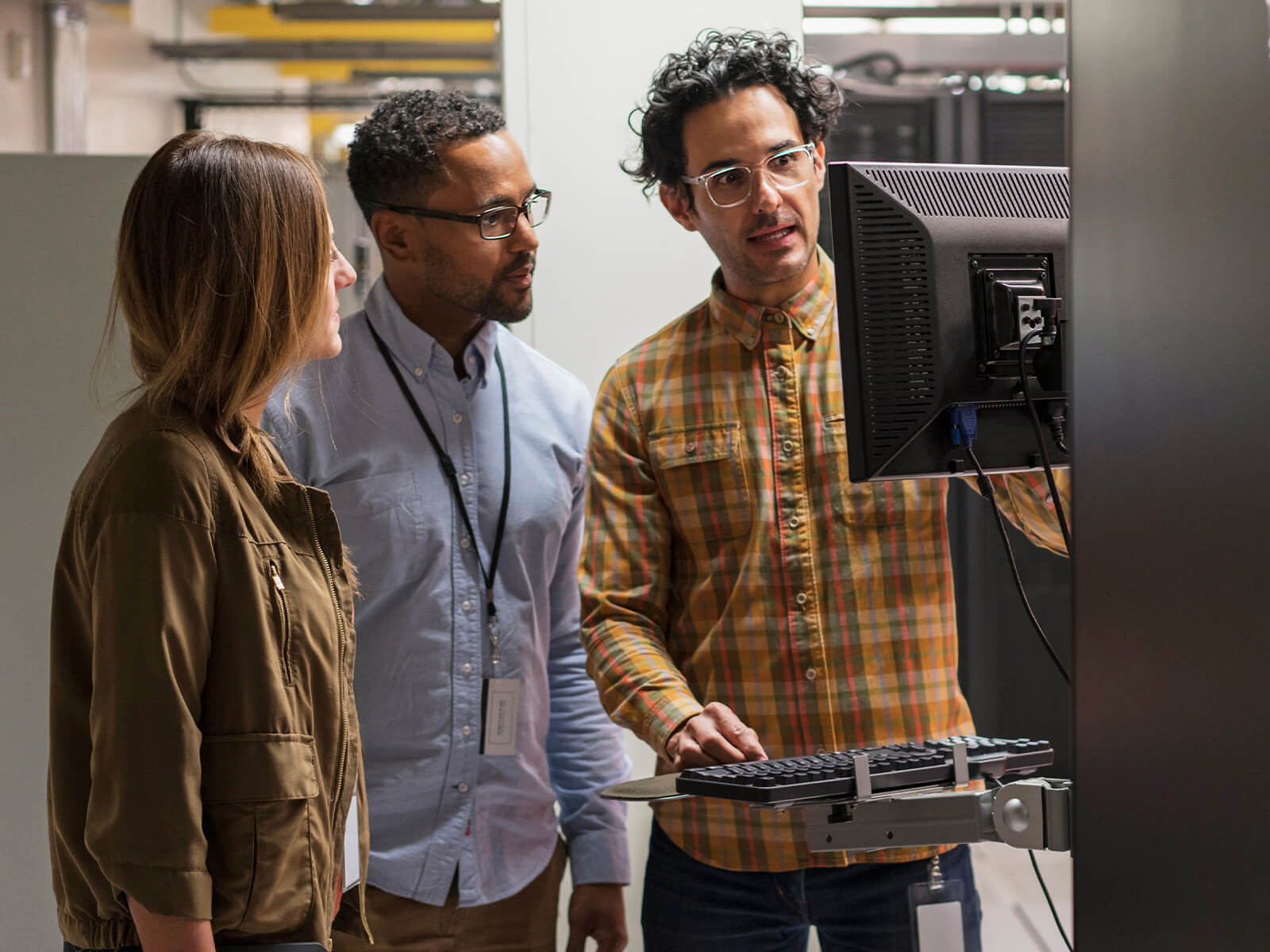Time to read: 4 minutes | Published: March 03, 2025

AI supercomputing What is AI supercomputing?
AI supercomputing is when organizations use ultrafast processors made up of hundreds of thousands of powerful machines to manage and interpret vast quantities of data using artificial intelligence (AI) models.


- How do AI supercomputers work?
- AI supercomputing and analytics workloads
- Examples of AI supercomputers
- HPE and AI supercomputing
How do AI supercomputers work?
AI supercomputers are typically made up of finely tuned hardware consisting of hundreds of thousands of processors, a specialized network, and a huge amount of storage.
The supercomputers divide workloads into different processors, so that each processor has a small piece of the work. As they run their individual parts of the work, the processors communicate with each other, often quite frequently. Each processor sends a message through a communication grid, so that the information is exchanged in many dimensions; up, down, left, right, back and forth, depending on the problem. This multi-dimensional process helps to keep workloads better tuned to each other, enabling greater processing speed.
Surprisingly, AI supercomputers run fairly ordinary operating systems, using Linux software to run the applications, network, and scheduling. The analytics programs being run are usually written in C or Fortran, passing messages through a communications library called MPI, which can be used on more than one machine.
With smaller circuits packed densely in the circuit boards, an AI supercomputer can run faster, but it also runs hotter. That’s because getting sufficient power into and out of a chip isn’t efficient enough yet, so the chips get very hot. But with hundreds of thousands of these multi-core nodes together, supercomputers have huge cooling needs. To mitigate that, the circuits are made with copper wires because they can transfer energy with very high power density. The supercomputer also uses forced air to dissipate heat and circulates refrigerants as well through the entire system.
How can AI supercomputing manage analytics workloads?
There are several reasons AI supercomputers can manage complex analytics workloads.
Nodes
AI supercomputers have multiple CPUs to enable extremely rapid computational speed. Within those CPUs, or nodes, there are 10 to 12 cores to perform tasks. And because a supercomputer often clusters thousands of nodes within its architecture, that means there are 12,000 cores working per thousand. So, if a single supercomputer has a mere thousand nodes, its work performance is in the trillions of cycles per second.
Circuits
They also have very small wire connections so the circuit board can be packed with more power than traditional computers’ circuit boards. Those two advancements allow complex arithmetic and logical operations to be interpreted and executed sequentially.
Processing
In addition, supercomputers use parallel processing so that multiple workloads can be run simultaneously. Specifically, because thousands of tasks are being processed at the same time, the work is done in milliseconds. AI supercomputers allow industries to train bigger, better, and more accurate models. And with more precision, teams can analyze information faster, bring key learnings to processes, tap more sources, and test more scenarios—all so industry advancements can accelerate.
Examples of AI supercomputers
NVIDIA DGX SuperPOD: This is a high-performance AI supercomputer designed by NVIDIA. It consists of multiple NVIDIA DGX systems interconnected to provide extraordinary computational power for AI research and development. The DGX SuperPOD is used for training large-scale AI models, performing complex simulations, and accelerating various deep learning tasks.
Summit: Developed by IBM and HPE; located at Oak Ridge National Laboratory in the United States, Summit is one of the fastest supercomputers in the world. It integrates AI capabilities with high-performance computing (HPC) to accelerate scientific research. Summit uses IBM POWER9 CPUs and NVIDIA Tesla V100 GPUs, making it highly efficient for AI workloads, such as deep learning and data analytics.
Fugaku: Fugaku is a Japanese supercomputer developed by RIKEN and Fujitsu. Located at the RIKEN Center for Computational Science, it has been recognized as one of the fastest supercomputers globally. Fugaku is designed to handle a wide range of applications, including AI and machine learning. Its architecture allows it to perform tasks such as image recognition, natural language processing, and other AI-driven simulations at high speeds.
These AI supercomputers are pivotal for advancements in various fields, from scientific research to industrial applications, due to their immense computational capabilities.
HPE and AI supercomputing
HPE has HPC/AI solutions to help you manage a wide range of workload and scale requirements. Our solutions are part of a comprehensive modular software portfolio for HPC/AI workloads that are optimized for HPC/AI applications and performance at scale, with the density and reliability you need to support high-powered CPUs and GPUs.
In addition, HPE offers HPC hardware designed for large-scale deployments that are fully integrated for deployment of any scale and built with advanced cooling options for dense platforms.
HPE Cray Supercomputers are an entirely new approach to supercomputing, with revolutionary capabilities. They are architected with a choice of infrastructure to provide an optimal solution for tens to hundreds of thousands of nodes. A dense eight-way GPU server provides consistent, predictable, and reliable performance, ensuring high productivity on large-scale workflows. Slingshot interconnect and Cray Software enable cloudlike user experiences, along with HPE Performance Cluster Manager for comprehensive system management.
